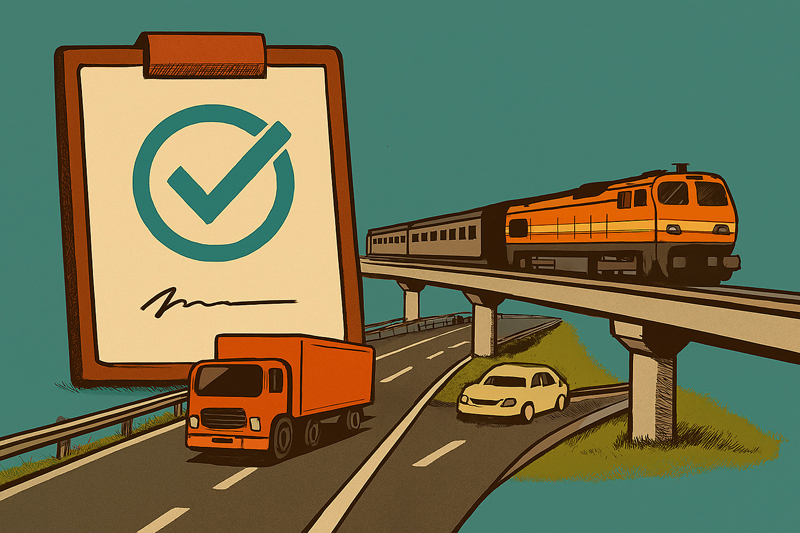This includes doubling the Bhagalpur-Dumka-Rampurhat rail line and cutting travel time on the Mokama-Munger highway to just 90 minutes.
The Cabinet Committee on Economic Affairs (CCEA), chaired by Prime Minister Narendra Modi, has approved two major infrastructure projects in eastern India—one road and one rail—under the PM-Gati Shakti National Master Plan. Together, the projects are valued at ₹76.16 billion and aim to enhance multi-modal connectivity, logistics efficiency, and regional development.
The first approval covers the construction of a four-lane, greenfield, access-controlled Mokama-Munger section of the Buxar-Bhagalpur High-Speed Corridor in Bihar. To be developed on a hybrid annuity mode (HAM) basis, the 82.4 km stretch carries a capital cost of ₹44.47 billion.
The corridor will connect key regional centres, including Mokama, Barahiya, Lakhisarai, Jamalpur, and Munger, ultimately linking to Bhagalpur. The Munger-Jamalpur-Bhagalpur belt is emerging as a strategic industrial zone for defence manufacturing, locomotives, food processing, textiles, and logistics.
Designed for average vehicular speeds of 80 kmph and a top design speed of 100 kmph, the highway is expected to reduce travel time to approximately 90 minutes. It will offer safer, faster, and uninterrupted connectivity for both passenger and freight vehicles.
The project is projected to generate 1.483 million man-days of direct employment and 1.846 million man-days of indirect employment, with further job creation expected from increased economic activity along the corridor.
Bhagalpur Track Upgrade
The CCEA also approved the doubling of the Bhagalpur-Dumka-Rampurhat single railway line, spanning 177 km across Bihar, Jharkhand, and West Bengal. The project carries an estimated cost of ₹31.69 billion.
The enhanced line capacity will improve mobility and service reliability for Indian Railways, easing congestion on one of the busiest freight corridors. The multi-tracking initiative will also strengthen connectivity to over 440 villages and benefit a population of nearly 2.87 million.
The route serves key pilgrimage destinations such as Deoghar and Tarapith and is vital for transporting commodities including coal, cement, fertilisers, bricks, and stone. The capacity augmentation is expected to support an additional 15 million tonnes of freight annually.
Environmental benefits include a projected reduction in oil imports by 50 million litres and a cut in carbon dioxide emissions by 240 million kg, equivalent to planting 10 million trees.


